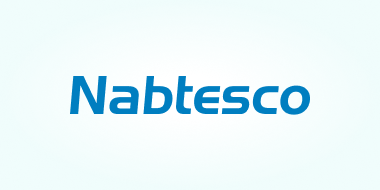
Management of Waste and Other Emissions
Activities for Waste Reduction
Prevention and Reduction of Pollution
Activities for Waste Reduction: Basic Approach
Concept of Waste Reduction
Activities to Reduce Landfill Waste
The Nabtesco Group is fostering the activities to reduce landfill waste to zero based on the approach of 3Rs (reduce, reuse, recycle)—the basic practice for establishing a resource-circulating society—, to reduce waste generated by our business activities.
Activities for Waste Reduction: Measures
Waste Reduction Targets and Results
In FY2024, we achieved our target of 0%* landfill disposal rate for waste. We will continue to promote 3Rs activities this year in order to maintain the 0% landfill disposal rate.
*Here “zero” means 0.05% or lower
Targets and Results of FY2024
| FY2024 Targets | FY2024 Results | Status |
|---|---|---|
| Landfill disposal rate: 0.05% or below | Landfill disposal rate: 0% | Achieved |
Trends in total emissions
Trends in waste volume
The Nabtesco Group classifies and manages waste according to the following categories. We have introduced an environmental information management tool to collect, aggregate, and analyze monthly reports on the amount of waste generated from each business site. For sites with large fluctuations, we investigate the causes of increase and, as necessary, implement measures to reduce waste generation.
In addition, during the annual on-site ESH audits conducted at each business site, the status of waste reduction activities and waste management are included as audit items. These audits lead to the formulation of countermeasures and implementation of improvement activities. The audit results and reports on the outcomes of ESH activities are compiled by the ESH Committee, reviewed at the Management Committee at the end of the fiscal year, and then reflected in activities for the following year.
| Breakdown of emissions | |
|---|---|
| Valuable materials | metal, oil, cardboard, etc. |
| Material recycling | oil, sludge, wood, liquid, plastic, etc. |
| Thermal recycling | packaging, general waste, plastic, etc. |
| Incineration | general waste, plastic, etc. |
| Detoxification | water-soluble oil, alkalis, etc. |
| Landfill | sludge, plastic, glass |
Measures to Reduce Hazardous Waste
The Nabtesco Group implements thoroughgoing waste management, so waste containing hazardous substances is not emitted.
Measures to Reduce Use of Raw Materials
The Nabtesco Group has introduced a system to encourage the development of energy-saving products and is promoting the development of smaller, lighter, and longer-life products, thereby reducing resource use during production and environmental impact at the time of disposal.
We also reuse usable parts and reduce the number of newly manufactured parts to reduce resource use.
We have been fostering the MRO (maintenance, repair, and overhaul) business to optimized the use of resources and expand sales in the service field.
Prevention and Reduction of Pollution: Basic Approach
Concept of Prevention and Reduction of Pollution
The Nabtesco Group is working to identify, reduce the use, and prevent the leakage of substances that impact the environment as a result of its business operations. For the plants that are planned to be rebuilt or refurbished, we conduct surveys as required by the related laws and regulations and when pollution is detected, we report it to the local government and conduct necessary purification measures.
Prevention and Reduction of Pollution: Measures
Pollution Prevention and Reduction Targets and Results
Targets and Results of FY2024 for Prevention and Reduction of Pollution
| Item | Targets | Results (Unit: kg/one million yen) |
Status | ||
|---|---|---|---|---|---|
| Scope | Targets (Unit: kg/one million yen) |
Target year |
|||
| Control of chemical substances | Volume of PRTR chemical substances used (per unit of sales) |
0.21 or below (2023 actual results) |
2024 | 0.21 | Not achieved |
| Volatile organic compound (VOC) atmospheric emissions (per unit of sales) |
0.130 or below (2023 actual results) |
2024 | 0.090 | Achieved | |
Volume of Major PRTR Chemical Substances Used
VOC Atmospheric Emissions



